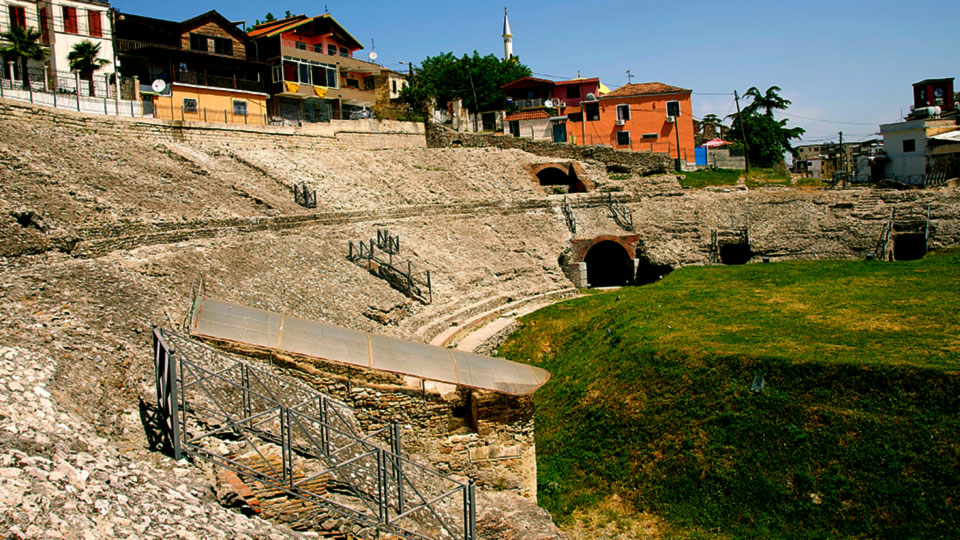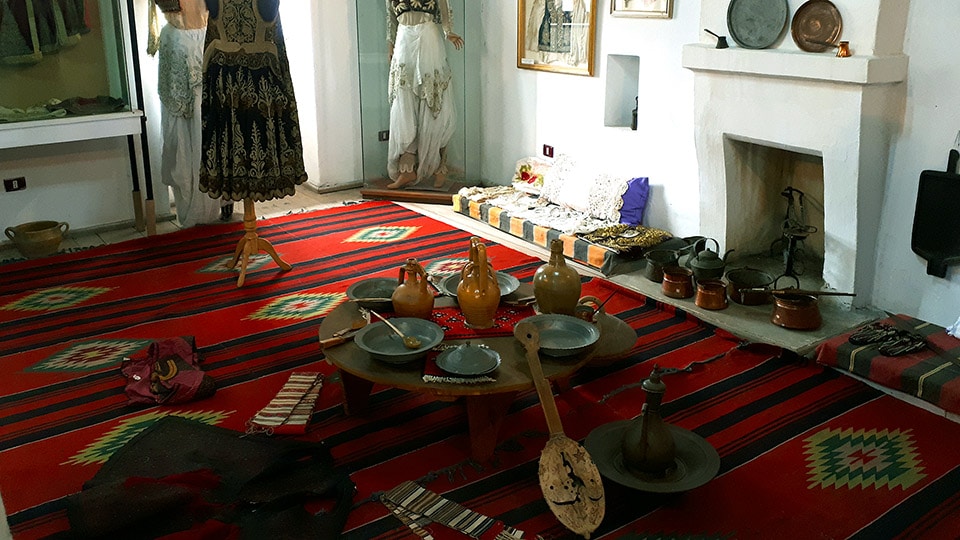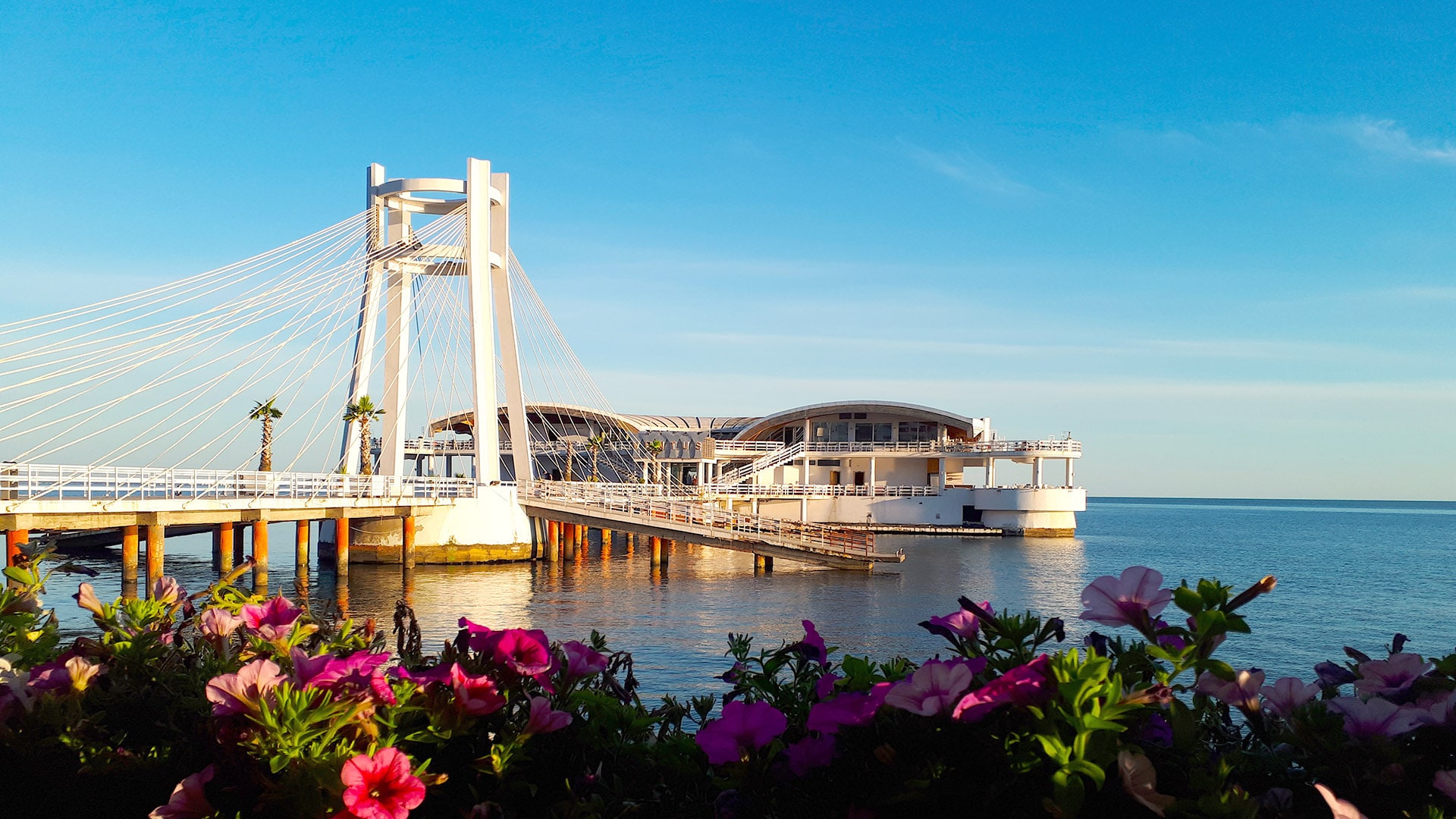Table of Contents
An article about the best things to do in Durres Albania.
Durres was surrounded by thick protective walls, segments of which have been uncovered after archeological excavations.
Dyrrachium was one of the largest harbor cities of antiquity on the eastern shoreline of the Adriatic. Despite the devastations and even though the city has suffered through the centuries, it has always been inhabited, up to the present day.
The construction of the new city was done on the leftovers of the old one which has made it difficult to discover the relics of antiquity.
The urns of various epochs, the numerous ornamental objects, most of which typically Illyrian, and several slabs with Illyrian names found in the graves, have brought to light the very important role played by the Illyrians in the life of the city.
In 30 AD, after the Roman conquest of Dyrrachium, the city was turned into a Roman Colony.
During the 1st two centuries, there were built some very magnificent works, such as the “Egnatia Road”, the aqueduct, amphitheater, the public baths, library, temples, mosaics, and beautiful sculptures.
As we mentioned above in Durres you will have the chance to navigate through different historical periods the most visible ones dating from 1st century B.C up to nowadays.
Check below the best things to do in Durres Albania during your visit
The Fortress of the City
The remains of the walls belong to the 5th and 6th centuries and the addition from the 13th and 14th centuries.
Ana Comnena, the daughter of the Byzantine Emperor, Alexis Comnenus, describing the fortress, writes: “its walls were so thick that 4 horsemen could ride abreast on the top of them”.
In the end, it was the Wars and Earthquakes which made the most damage to the fortress throughout time.
The Amphitheatre
It is one of the most important monuments, discovered in Durres in 1966 by Albanian archeologists.
The Roman Amphitheatre was built during the 2nd century A.D with a capacity of about 15 – 20.000 spectators.
This is one of the major public works done in the city of Dyrrachion and can be compared with the famous amphitheaters of antiquity.
It is as well one of the top things to do in Durrës, Albania. In this magnificent building, the slave owners amused themselves by watching artistic performances of fights of gladiators and beasts.

The amphitheater is one of the biggest and most exquisite monuments that has survived from the ancient city.
It was abandoned in the middle Ages. In the 10th century, a chapel and cemetery were built upon its areas and galleries.
Today only parts of the galleries, staircases, and arena can be visited.
The amphitheater was unearthed by chance in 1966, while a citizen was digging in his garden.
Because of the strong earthquakes that shook the city, only 1/3 of ancient Dyrrachium has been excavated. The archaeologists are facing enormous problems, as they need to destroy most of the houses built upon the ancient ruins.
The Beauty of Durres
The mosaic of “Beauty of Durres” belongs to 4th century B.C.
The mosaic was discovered in 1916 and it is the most polychromatic mosaic found in the country.
The mosaic was discovered beneath a dwelling, in a residential quarter of the town. It is elliptical in shape and measures 17 x 10 feet.
The mosaic depicts on a block of ground, woman’s head surrounded by flowers. You may see it in the National Historical Museum in Tirana.
Roman Thermal Baths
In the area where now “Aleksander Moisiu” theatre is located, were unearthed the public baths of the city, consisting of many rooms and series of masonry chambers and flues, through which the heat was distributed to the rooms.
One of these rooms is paved with black and white marble slabs arranged like a chessboard.
The bath belonged to the I-II century A.D. Because of their archeological significance, and in order to keep them in their present state, the ground floor of the theatre has now been turned into a museum.
The Archeological Museum
The Archeological Museum situated near the sea, is rich in objects excavated in Durres.
It gives a view of the ancient Dyrrachium. There are many objects excavated in Durres and this museum being small cannot reveal all of them, so it was build another museum next to the existing one.
The larger museum was inaugurated in April 2002, which has about 2000 objects excavated in Durrës.
The Ethnographic Museum
The museum is opened in 1982 in one characteristic house of the XIX century. In the rooms of this museum are presently more than 300 objects, dresses, and traditional dishes of the city and regions around.
In two of the rooms, you can see the bibliography and artistic history of the Aleksandër Moisiu family, based on authentic documents.
And in the other rooms, you can see the amazing work of the artisans of Durres. This museum contains collections of ethnographic traditional dresses of the Durres area and Middle Albania.

Venetian Tower
The Venetian Castle is an extension of the Byzantine Fortress of Durrës. Built in the sixth century, it was considered one of the most powerful fortresses along the western coast of the Adriatic.
Architectonic elements of the structure and historic records show that the fortress was rebuild in the first half of the fifteenth century when Durrës was ruled by the Republic of Venice.
These are some of the best things do to in Durrës when you travel to Albania. After you visit the ancient monuments, you can give yourself some time to walk along the beach seeing the new architecture, and enjoy the sunset.
Sip Wine from Duka Winery
The Vineyards and Winery located in the hills of Ishmi, Durres.
Duka winery produces three types of red wine: Merlot, Tempranillo, Cabernet Sauvignon. You can sit by the lake and try some of the wines they produce at the winery.
The Fatih Mosque
The Fatih Mosque dominates the main square in old town Durres, as it’s elevated against the central plateau. The Mosque dates back to the 1500s named after the Ottoman ruler who built it.
Like all other religious sites in Albania, it was banned during the communist era and even its minaret was ruined.
Byzantine Forum (Macellum)
The Byzantine Forum (Macellum) is still worth your time for its importance in the development of the city from the Classical period to the Late Antiquity (and not least as it’s Free). While only a few columns now remain, with weeds poking up from the ancient pavement and unlocked at night, its somewhat dilapidated state hides the fact that this open-air market was the beating heart of the city of Dyrrachium for many century’s.
Royal Villa of Durres
This villa was built during the Albanian Monarchy that lasted a decade. This Royal Villa has an interesting story as it was built in 1937 for King Zog I, he stayed and had the opportunity to enjoy his Villa for just one year. After the Monarchy was dissolved the villa became a reception building for communism and belonged to the state. In the civil unrest of 1997, this vill was ransacked and has remained uninhabited since then.
Rodoni Castle
This castle or fortress is built on the cape of Rodon, in a scenic setting at the end of the Rodon Cape. The fortress was used by Scanderbeg as a point of embarkation for his escape from Albania to Brindisi during the Ottoman Conquest in the 1460s.

0 Comment